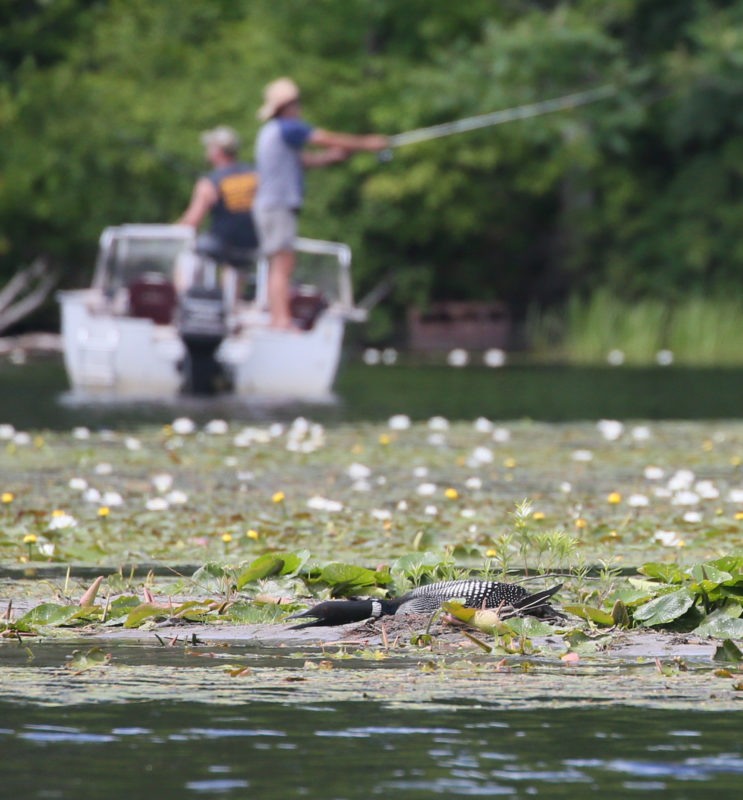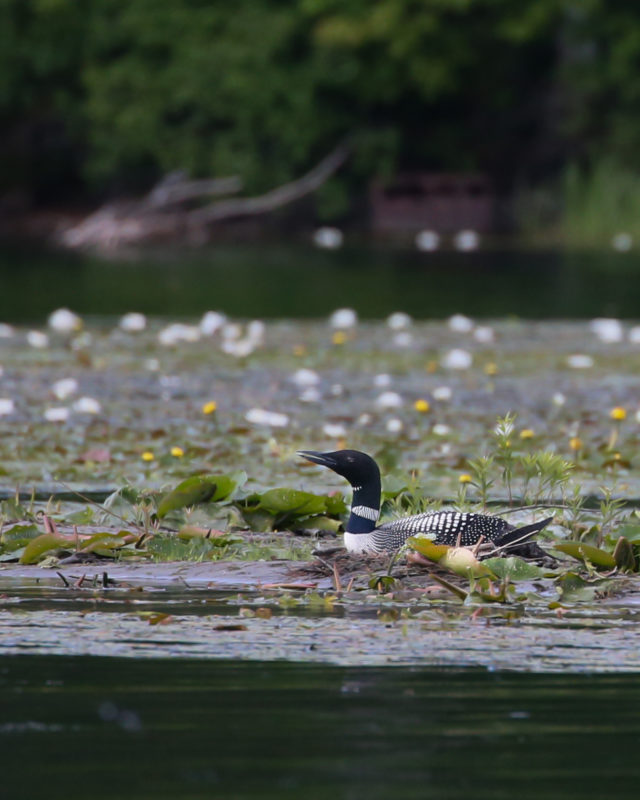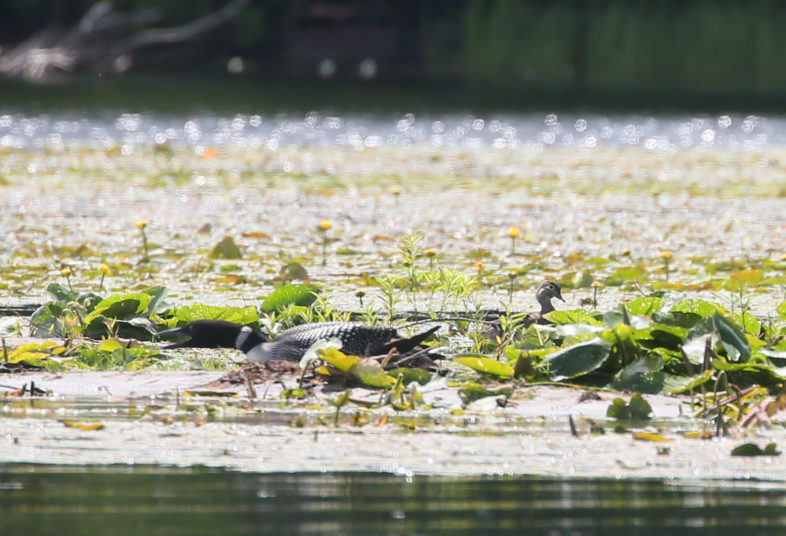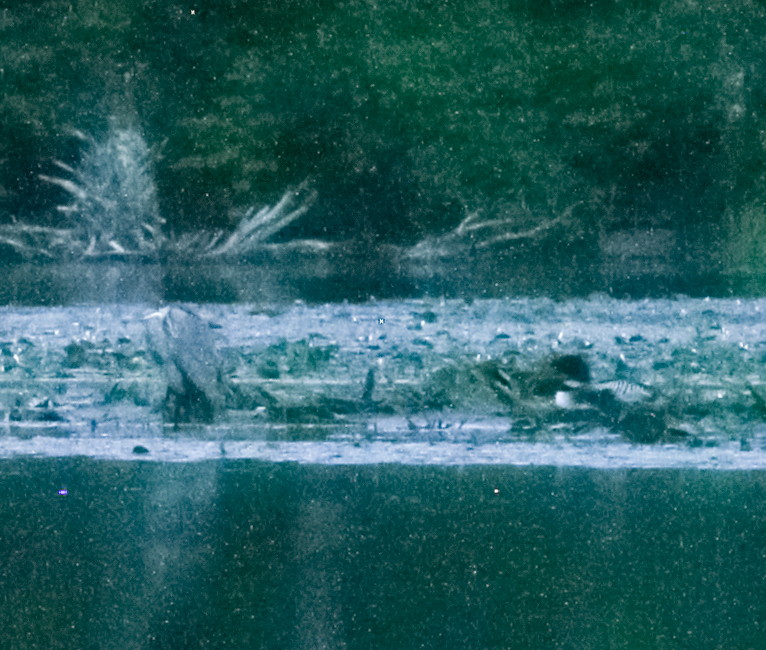A Common Loon nest was discovered on a mudflat on Lake Fairlee in mid-July. Local naturalist and photographer, Tig Tillinghast offered to place a remote camera that can capture what the loons are doing and how they react to visiting animals and boaters. An image was automatically taken every 10 seconds. The following blog was written by Tig as he interprets the action. -Eric Hanson, VCE Loon Biologist
The loons are visited every so often by curious boaters, and they react well (just lowering their necks to the water level, presumably to create a lower profile) when those boaters stay for short periods on the other side of the nest warning signs that have been placed. Boaters who linger for 25 minutes or those that venture closer have caused the loon to leave the nest a few times. In two instances, the absence from the nest was about 30 minutes. The loons stayed off the nest for just few minutes after a disturbance a few days ago.
We have about 9,000 images now, most spaced out about 10 seconds from one another. I find that I can identify loons from among each other with the fingerprint-like patter on their neck band. Now, I don’t know which one is the male and which one is the female, but I can at least determine an individual. Eventually, we’ll get some good shots when they’re trading places on the nest, and size should clinch which one is which, and we can then backfill that data on the images taken to date. Here is an over-cropped example of the “neck print”…
Most people are respectful allowing the signs to overcome their curiosity. The people who appear to ignore the signs, or those that do things like cast lines toward the loons from the other side of the sign, have all been fishermen. They don’t appear to bear any curiosity, never mind malice, to the loons. They appear to be people who are unlikely to be impeded in their quest for fish but still obeying the letter of the sentiment of the nest warning signs. Many don’t even seem to notice the loon nest.
Interactions with other species are interesting. A family of geese and one of mallards comes by with some frequency, but doesn’t seem to elicit any reaction from the loons. A female wood duck, though, loitered an oddly long time, and generated the “hunkering” reaction eventually. Here she is giving the loon her odd look, and the loon doing it’s hunker reaction…
The oddest one, though, was the great blue heron who decided upon it getting dark to stop his fishing for the day about 4 feet directly in front of the nesting loon. That heron roosted on the mudflat, staying stock still all night. Here is a photo at around 4 a.m., before it got light and the heron restarted its stilted walk along the delta. This is a picture I’m surprised we were able to get, given it was taken by
moonlight from that evening’s half moon. It’s a 30-second exposure (thus those “hot pixels” showing up on the photo). The loon never appeared to be disturbed by this. It seemed sort of like the guy who sees you sitting on your towel on an otherwise unoccupied beach and decides to put his towel right next to yours.
One last disturbance to note: there were a couple times when I could see in the pattern of the water in our pictures that a large wake was coming through. One in particular actually swamped the nest site a very little bit. The loon on the nest reacted by standing up and doing the poking and prodding behavior with the eggs that we see each time the male and female exchange guard. After ensuring that they were there, it sat back down.
It appears no one knows when this nest started, so we’re a bit in the dark on when hatching would occur. I suppose this is a late first nest, and chicks would erupt momentarily, or it’s a second nesting due to a previous failure, and we could expect hatching 26-28 days after some unknown date 2 to 3 weeks ago. Or that they’re dud eggs because they weren’t incubated adequately early on. I’m hoping for the former, as the chicks wouldn’t be depending on the water levels not increasing.




